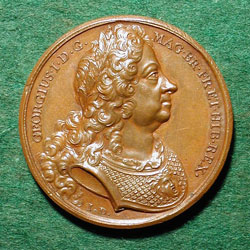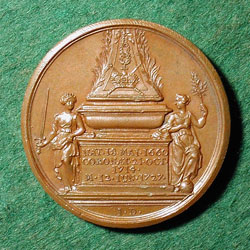

|
GEORGE I |
|
|
George Louis, George I (1660-1727), King of Great Britain and Ireland (1714-1727) and Elector of Hanover (1698-1727), was the first of the Hanoverian kings, succeeding Queen Anne and ending the Stuart line to the throne. Although a German, who could speak little English, he succeeded to the throne as a result of the Act of Settlement which excluded Catholics from ascending to the monarchy. George was chosen over James Stuart (the Elder Pretender), the son of James II, as James Stuart was Catholic and George was the next Protestant in line to the throne. This succession was somewhat circuitous: in Germany, George was heir through his father, Ernest Augustus, to the hereditary lay bishopric of Osnabruck, and to the duchy of Calenberg, which formed one portion of the Hanoverian possessions of the house of Brunswick. George I, the great-grandson of James I, inherited the British crown through his mother Sophia, a protestant granddaughter of James I of England. George I was succeeded by George II, George III, George IV and Queen Victoria, the last Hanoverian monarch. Politically, George favored the Whigs over the Tories, suspecting the latter of Jacobite sympathies. He put down Jacobite rebellions in1715 and 1719. Not being able to speak English well, George preferred his native Hanover and took little interest in domestic affairs. He allowed power to pass to Parliament and ministers such as Robert Walpole and Charles Townshend. When the financial speculation known as the South Sea Bubble burst in 1720, George’s political reputation was saved by Walpole, who demanded in return a freer reign on government. George was succeeded by his son, George II. (From O’Brien) |
|